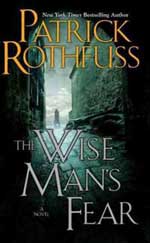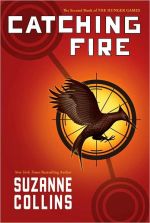As the first step in researching my next book, I decided to study the competition. Or at least the people who sometimes hang out with the competition. I wanted to read a bunch of books that one might tag as “business advice,” or “career self-help,” or “here’s what good business people do, you moron.” Here’s the list I ended up with:
- So Good They Can’t Ignore You by Cal Newport
- Lean In by Sheryl Sandberg
- The Alliance by Hoffman, Casnocha, and Yeh
- Zero to One by Peter Theil
- Give and Take by Adam Grant
- What Video Games Have to Teach Us About Learning and Literacy
- Gamify: How Gamification Motivates People to Do Extraordinary Things by Brian Burke
- The 4-Hour Workweek by Tim Ferris
- Superbetter by Jane McGonigal
- Friend and Foe by Adam Galinsky and Maurice Schweitzer
- Smarter Faster Better by Charles Duhigg
- Choose Yourself by James Altucher
- The One Minute Manager
- Never Eat Alone by Keith Ferrazzi
- Remote: Office Not Required by Jason Fried and David Hansson
- Faster Cheaper Better by Michael Hammer and Lisa Hershman
- StrengthsFinder 2.0 by Tom Rath
- #Girlboss by Sophia Amoruso
- Mindset by Carold Dweck
Plus there were these that I had previously read:
- Drive by Dan Pink
- The Power of Habit by Charles Duhigg
- Getting Things Done by David Allen
- Quiet by Susan Cain
- Predictably Irrational by Dan Ariely
- The Tipping Point by Malcom Gladwell
- Flow by Mihaly Csikszentmihalyi
- Work Rules! by Laslo Bock
I confess, there were some of these I didn’t read cover to cover, because I didn’t need to in order to get what I needed. But I always read at least a third, sometimes more, and often the whole thing. The idea was to try and understand why the book was popular and what lessons I could take from it. After my time with each, I wrote up a summary in Evernote that at least answered these questions:
- What is the one sentence summary of this book?
- How is it organized?
- What does it do well?
- What does it do poorly?
- What does it do that others don’t?
- What does it do that others also do?
This post will try and summarize what I’ve learned and the lessons I’m going to take with me. There was a lot of variety in these books. They ranged from barely a book at all (The One Minute Manager and Strengths Finder 2.0) to academic (Give and Take) to thinly veiled polemics (Zero to One). There was no one meaningful thing that all the books did. I didn’t like all the books –a few of them I really hated– but they all had something to teach. Here are some lessons I’ve extracted, even from the ones I hated.
Flip Conventional Wisdom
Books like So Good They Can’t Ignore You and The Alliance were attention getting because they took conventional wisdom and told you it was dumb advice. “Following your dreams is a super bad idea” or “People who put others first are more successful” are the kinds of messages that stand out. Find ways to do this wherever I can and maybe make it the hook for the whole book. “Obsession with video games makes you more effective at work” for example.
Tell Stories
I knew this one already, but it bears repeating. Some books, like Smarter Faster Better and Friend & Foe were a pleasure to read and made their points stick because they embedded them in stories about people. Often these were taken from headlines and sources that could be researched. Other books, like Lean In and Superbetter were more autobiographical and relied on personal experiences. Both are effective and I should strive to use stories with every major point and lesson.
Be Prescriptive, Be Specific and Be Practical
Look, I hated The 4-Hour Work Week and wouldn’t trust its author any further than I could throw him, but I have to admit that part of its success is because it offers specific advice that anyone can take. It points you to websites, gives you exercises, feeds you scripts, and tells you exactly what you can do. The advice in the book is actionable, if nothing else. Others, like Never Eat Alone and Superbetter, do this as well if to a lesser degree. They tell you what to do, and not just in a final chapter about “Putting this all to work” or what not. It’s baked into every page.
This give the book a feeling of utility and practicality that probably make it easy to recommend, talk about, share, and reference. Like you’ve gotten something out of your purchase beyond entertainment.
Be Evidence Based
Here’s one thing that most of the books definitely did NOT do. Some, like Zero to On, #Girlboss, and Remote – Office Not Required, and The Alliance get by on their authors’ platforms and credibility. They’re big names and they just tell you what they think and people buy the books because of the author. Others, like Choose Yourself and The 4-Hour Work Week play more off confidence and assertiveness and, frankly, telling you what you want to hear.
But for my goals, I’m better off learning from books like Smarter Faster Better, Give and Take, Friend & Foe, and Mindset. These books reference research, science, and experts in order to support their lessons and theses. And they stay readable while doing it because the research is used to support the story, not the other way around. In reality the research dictates the content of the book (because they aren’t just making things up) but it feels like the stories come first and the research explains them. It’s a good trick and one that I should learn.
Cram In Some Asides, Exercises, and Callouts
Several books made use of little inserts that broke up the chapters and made the books interesting to skim and look at. #Girlboss for example, had “Profiles of a Girlboss” vignette where the author had co-workers write brief bios of themselves. Remote had little cartoons, though the authors WAY overdid it. Superbetter had “quests” and exercises. The 4-Hour Work Week had all manner of exercises and callouts featuring websites and other tools. Faster Cheaper Better desperately needed callouts and bulleted lists to replace its giant paragraphs.
I think this feature helps make the book less tedious and probably helps sell it if someone is flipping through it. It’s also a great place to hit on the “Be prescriptive” advice above.
Be Cheerful, Be Optimistic, Be Fun
Even when I recognized the content of a book to be dreck (e.g., Choose Yourself) I found that I would still respond favorably to some part of it when the tone was happy, upbeat, and conversational. Many of the books like The 4-Hour Work Week and #Girlboss leaned heavily on this and were engaging reads as a result even if they were deeply flawed or lacking upon deeper analysis. They told personal stories, made jokes, spoke directly to the reader, and were generally optimistic about how things were going.
This is one of my strengths as a writer as well (or at least it has worked for me) so I should continue to lean on it when possible.
Focus
The books I responded to the most were ones that had a focus, a topic, a thesis, or some other strong organizing principle. There has to be a lesson or a problem or an insight to build the book around. Some didn’t do this at all. Choose Yourself was meandering. Mindset had a clear topic, but it went nowhere with it. Superbetter meandered without a strong structure. Zero to One seemed like a conclusion in search of an argument. And even Smarter Faster Better had a structure and topic that it failed to deliver on –it instead just gave us isolated vignettes that don’t live up to the topics of even individual chapters.
Other books, however, gave you a strong question or topic and then delivered. How has the employer-employee relationship changed? The Alliance. How do you improve and use your professional network? Never Eat Alone. When should you cooperate and when should you compete? Give and Take. What are your strengths and how can you build on them? Strengthsfinder 2.0.
Every part of the book should clearly relate to its point and its thesis.
So these are some of the major lessons I learned. I think it was a worthwhile exercise for a (relatively) new author and I hope to keep this all in mind. If nothing else it gave me a good sense of the competitive landscape and will help with the book proposal. And I picked up a few really good books along the way.
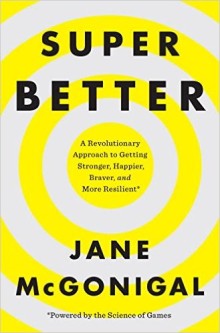 You remember Jane McGonigal, right? She’s the one who blends positive psychology with game design and hopes that a game designer will someday win a Nobel Prize. Her 2015 book SuperBetter extends that concept and explains, more or less, how to apply gamification to dealing with adversity and challenge.
You remember Jane McGonigal, right? She’s the one who blends positive psychology with game design and hopes that a game designer will someday win a Nobel Prize. Her 2015 book SuperBetter extends that concept and explains, more or less, how to apply gamification to dealing with adversity and challenge.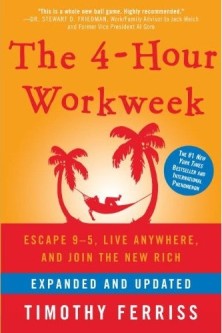 You all, I think this guy may be a sociopath. And he wants me to join him.
You all, I think this guy may be a sociopath. And he wants me to join him.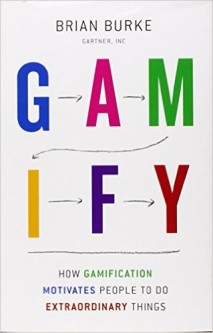 I admit it: as someone who blabs on about the psychology of video games and as someone who is an industrial-organizational psychologist, I should know more about gamification. But I don’t. So I picked up this book.
I admit it: as someone who blabs on about the psychology of video games and as someone who is an industrial-organizational psychologist, I should know more about gamification. But I don’t. So I picked up this book.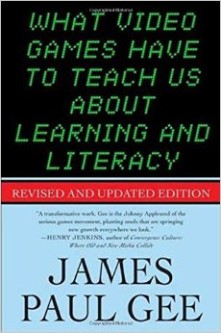 Sometimes it’s good to read something outside your area of expertise and comfort zone. WHAT VIDEO GAMES HAVE TO TECH US ABOUT LEARNING AND LITERACY is first about the academic study of learning and education, second about linguistics, and a distant third about video games. I’m only knowledgeable about one of those things, but I still got a lot out of it.
Sometimes it’s good to read something outside your area of expertise and comfort zone. WHAT VIDEO GAMES HAVE TO TECH US ABOUT LEARNING AND LITERACY is first about the academic study of learning and education, second about linguistics, and a distant third about video games. I’m only knowledgeable about one of those things, but I still got a lot out of it.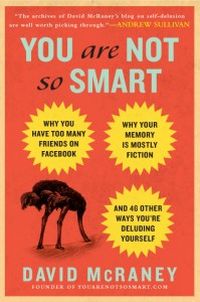 You Are Not So Smart: Why You Have Too Many Friends on Facebook, Why Your Memory Is Mostly Fiction, and 46 Other Ways You’re Deluding Yourself is a
You Are Not So Smart: Why You Have Too Many Friends on Facebook, Why Your Memory Is Mostly Fiction, and 46 Other Ways You’re Deluding Yourself is a 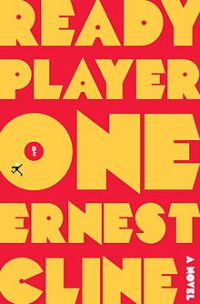 Okay, let’s say you’re a child of the 1980s, and like a lot of people who were teens during that unprecedented explosion of pop culture you’re thoroughly steeped in the lore of 80s American movies, television shows, video games, music, and toys. NOW, imagine that all that trivia is key –almost literally– to proving not only that you weren’t wasting your youth, but also to defeating evil, getting the girl, and acquiring massive riches. That’s pretty much the nerd fantasy behind Ready Player One by Ernest Cline.
Okay, let’s say you’re a child of the 1980s, and like a lot of people who were teens during that unprecedented explosion of pop culture you’re thoroughly steeped in the lore of 80s American movies, television shows, video games, music, and toys. NOW, imagine that all that trivia is key –almost literally– to proving not only that you weren’t wasting your youth, but also to defeating evil, getting the girl, and acquiring massive riches. That’s pretty much the nerd fantasy behind Ready Player One by Ernest Cline.











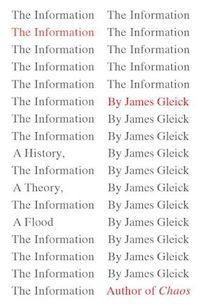 Jame’s Gleick’s The Information: A History, a Theory, a Flood is kind of all over the place, as you might expect given its nebulous subject matter. The author intends to do pretty much what the subtitle suggests: review the history of information as a concept, dive into the scientific field of information theory, and ponder what recent volume of information flow means for us as a society or even as a species. As such, it’s a mix of history, hard science, and even a dash of speculation.
Jame’s Gleick’s The Information: A History, a Theory, a Flood is kind of all over the place, as you might expect given its nebulous subject matter. The author intends to do pretty much what the subtitle suggests: review the history of information as a concept, dive into the scientific field of information theory, and ponder what recent volume of information flow means for us as a society or even as a species. As such, it’s a mix of history, hard science, and even a dash of speculation.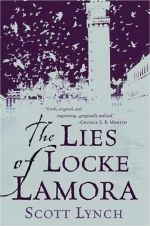 As far as character archetypes go, we’ve seen the likes of Locke Lamora before: clever, dashing, silver-tongued, and full of tricks, he seems to have been put together with the same blocks as Robin Hood, Brer Rabbit, and most Errol Flynn movie roles. To have him as a character in a psudo-fantasy novel, then, is pretty interesting. Lamora and his partners in crime fancy themselves as diciples of the god of thieves, and they live simply to be “richer and cleverer than anyone else” with stealing from the rich being more the point than actually being rich.
As far as character archetypes go, we’ve seen the likes of Locke Lamora before: clever, dashing, silver-tongued, and full of tricks, he seems to have been put together with the same blocks as Robin Hood, Brer Rabbit, and most Errol Flynn movie roles. To have him as a character in a psudo-fantasy novel, then, is pretty interesting. Lamora and his partners in crime fancy themselves as diciples of the god of thieves, and they live simply to be “richer and cleverer than anyone else” with stealing from the rich being more the point than actually being rich. In contrast, the second book, Red Seas Under Red Skies, almost stalls out in the beginning. It opens with Locke and his companion Jean attempting a casino heist that seems like something more out of an Oceans 11 movie than a fantasy novel. Sure, this isn’t a typical fantasy setting, but the “Sinspire” casino still seemed a little too incongruous for my tastes. From there the plot gets messy quickly and it seems like Lynch is picking up and abandoning threads all over the place just to have fun with them but not putting enough thought into a coherent narrative. This changes towards the end of the book when all the major parts of the plot mostly come together, but it’s still nowhere as nearly done as in the first book.
In contrast, the second book, Red Seas Under Red Skies, almost stalls out in the beginning. It opens with Locke and his companion Jean attempting a casino heist that seems like something more out of an Oceans 11 movie than a fantasy novel. Sure, this isn’t a typical fantasy setting, but the “Sinspire” casino still seemed a little too incongruous for my tastes. From there the plot gets messy quickly and it seems like Lynch is picking up and abandoning threads all over the place just to have fun with them but not putting enough thought into a coherent narrative. This changes towards the end of the book when all the major parts of the plot mostly come together, but it’s still nowhere as nearly done as in the first book.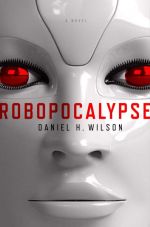





























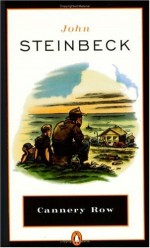
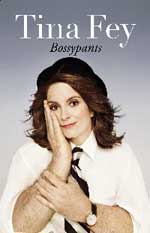 You know Tina Fey, right? Writer and host of Weekend update for Saturday Night Live, actress and producer on 30 Rock, and reluctant Sara Palin impersonator. Bossypants is the result of the “hey, I should write a book!” urge that people like her get, and lucky for us it’s as funny and well written as we could want. The book is autobiographical in nature, and follows the typical template of starting with her childhood, moving through adolescence, then young adulthood, early career, then current day. For some reason I thought the book was going to deal more with motherhood, but while that particular topic is present, it’s no more so than others.
You know Tina Fey, right? Writer and host of Weekend update for Saturday Night Live, actress and producer on 30 Rock, and reluctant Sara Palin impersonator. Bossypants is the result of the “hey, I should write a book!” urge that people like her get, and lucky for us it’s as funny and well written as we could want. The book is autobiographical in nature, and follows the typical template of starting with her childhood, moving through adolescence, then young adulthood, early career, then current day. For some reason I thought the book was going to deal more with motherhood, but while that particular topic is present, it’s no more so than others. 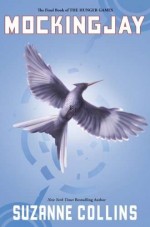 Mockingjay is the third book in the Hunger Games trilogy by Suzanne Collins, in which our heroine Katniss Everdene finally comes into her own. Here’s the super condensed version of the setup: dystopia, dictatorship, reality TV, gladiatorial games, love triangle, rebellion. That will get you most of the way there, but you can read my review of
Mockingjay is the third book in the Hunger Games trilogy by Suzanne Collins, in which our heroine Katniss Everdene finally comes into her own. Here’s the super condensed version of the setup: dystopia, dictatorship, reality TV, gladiatorial games, love triangle, rebellion. That will get you most of the way there, but you can read my review of 